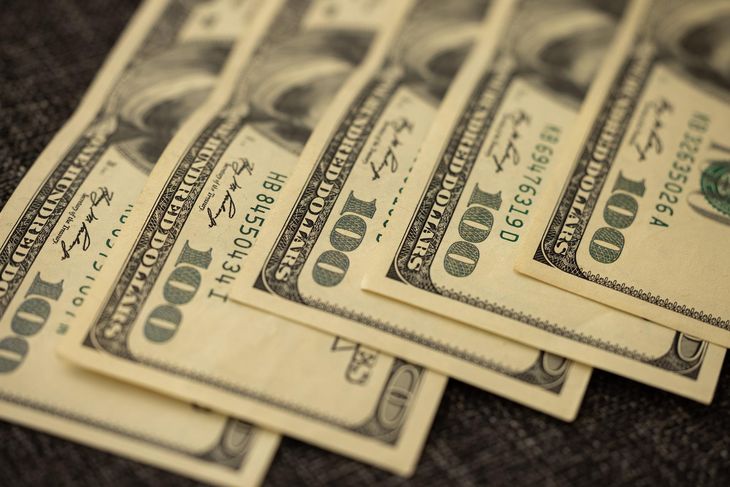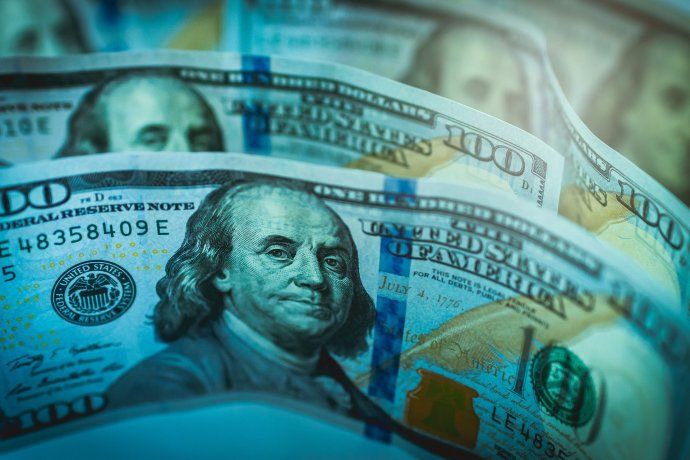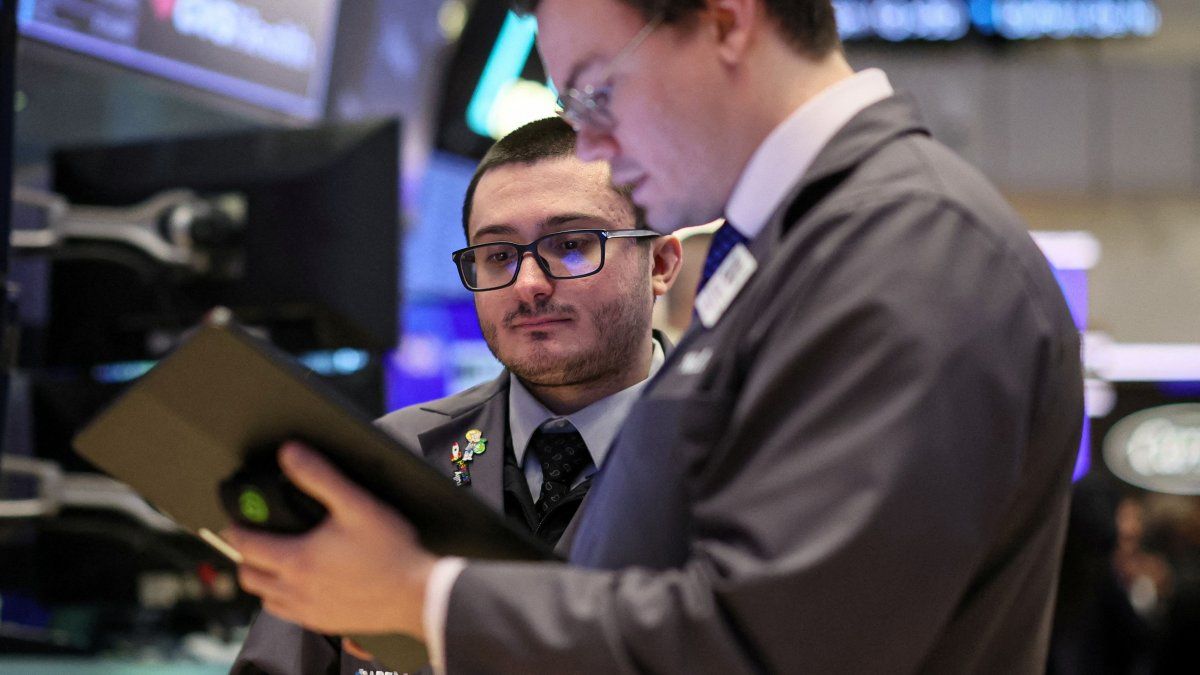Consequently, the gap between the blue dollar and the official wholesale exchange rate exceeded 76%.
The informal dollar came from exhibiting a rise from $2.50 during the past week. Now it’s up $4.50 in just two days.
What will happen to the blue dollar
The maximum price of the informal dollar so far this year was seen at the end of January when it traded above $223, prior to the agreement with the International Monetary Fund (IMF).
The rise has its explanation in some economic data of recent days, according to analysts and, although it is difficult to predict the future behavior of a market as volatile as the blue, some forecasts are risky until the end of the month.
“The equilibrium dollar continues to climb, monetary liabilities on reserves give us an equilibrium value of $219, when in the market the MEP dollar is at $211 and the Cash With Liquidation dollar is at $213. The blue is a little calmer. In our opinion, the D-day in financial matters is Thursday, May 19, a successful tender will assure the government that it will not have to resort to the monetary issue as it did in recent weeks, that should decompress the panorama ” , said the analyst Salvador Di Stéfano.
“In full high season of foreign exchange liquidation, the BCRA has little and nothing lefta. Compared to last year, you are buying less than half. And looking forward, it should buy around 75 million dollars per wheel to accumulate 2.8 billion in the quarter and meet the goal with the IMF in June,” said Roberto Geretto, from Fundcorp.
If the current dynamics continue, when the high season of foreign exchange liquidation passes, it is very likely that we expect a higher stocks and a dollar traveling somewhat faster than the current 4% per month,” he estimated.
dollar-inversions-finances.jpg
“There is a severe challenge for the Argentine economy, since correcting relative price distortions, an essential step for any future stabilization plan, implies going much further than addressing the dollar/peso relationship,” Fundación Mediterránea said.
“The policy of subsidies and tariffs for public services is becoming increasingly relevant, as well as the operation of foreign trade, which today is highly affected by the application of a large number of restrictions, both in import/export operations and in the availability currency,” he added.
“The problem we have today is that there is no anchor. The anchors that can contain this inflationary acceleration have disappeared, which in these months has been very impressive,” Ricardo Delgado, of the Analytica consultancy, said in radio statements.
Gustavo Quintana, from PR Foreign Exchange Operators, points out that “the rise was not that important”, but explains that the correction is always due to a combination of factors, there is not one that can justify it.
dollar-inversions-finances.jpg

pixabay
Quintana mentions in the first place that “the price index known last week was not encouraging.” Let us remember that on Thursday, May 12, the inflation data for April was released, which was 6%, somewhat below the 6.7% in March, but still at worrying levels.
In addition, he says that negative expectations are on the rise and that there may be “a little more pesos on the street and less supply” these days. Likewise, he clarifies that “in a small market like the blue dollar, the trend can change from one day to the next” and that is why he considers that it will be necessary to wait a few days to see what happens.
The economist at Epyca Consultora, Joel Lupieri, quoted by iProfesional, agrees that the inflation data has repercussions on the expectation of devaluation and assures in this sense that “a lack of commitment on the part of the state to clarify the course that the official dollar will follow , activates the demand for that currency as a store of value”.
Lupieri recalls that, in recent weeks, we have witnessed a dollar that has lateralized in the range of $199-$210 and believes that, “with the rise in prices, it seems that it will consolidate above $200”.
For his part, the economist Federico Glustein adds another element related to the rise in the blue dollar and that is that “the rise is correlated with specific market purchase factors with the possibility of carrying the MEP at $211 and the CCL at $212 “.
For Glustein, it is likely that the blue dollar -except for some particular event- will begin to move in this way, rising slowly during the week so as not to be left behind by the solidarity dollar, but without sudden jumps. This is thanks to the fact that the Central Bank of the Argentine Republic (BCRA) is collecting foreign currency so far this month.
Dolar blue

pixabay
Blue dollar price in May
In the fifth month of the year, the blue dollar rises $7.50 after ending April at $200.50.
The parallel dollar came from rising just 50 cents last month, and down $11 in March, which represented its worst performance in 14 months.
Last February, the informal dollar fell $6.50 (-3%), after rising $5 or 2.4% in January.
Blue dollar in the year
so far this year, the informal dollar does not register variations after ending 2021 at $208.
During the past year, the blue dollar registered a rise of 25.3% ($42), half compared to the inflation of the period (50.9%). However, it is worth remembering that in 2020 it had shown a sharp jump of 111% (compared to 36% inflation).
What is the blue dollar?
The value of the blue dollar has a substantial difference with the official dollar, which is acquired in banks and has an established price. Its sale is in the informal market, without regulations or limits, and for this reason it is generally operated at a value greater than the official dollar.
Why is it called the blue dollar?
The origin of the blue dollar as a denomination for the operation of the banknote in the informal market is not clear. But there are theories.
An explanation of its name indicates that it is so called because in English, “blue”, in addition to naming the color blue, refers to something “dark”.
Another theory relates it to purchase operations through bonds or shares of companies known as “blue chips.” They also link it to the approximate color that appears when a fibron is applied to detect counterfeit bills.
Price of the savings or tourist dollar
The savings dollar or solidarity dollar -retail plus tax- increased 46 cents to $203.86 on average.
More news about the Blue Dollar and the Dollar
Dollar: the Central Bank denies “exchange delay” and says that the “triple goal” is already met
Curious UN recommendation: buy blue dollar
Dollar: alert for reserves and the threat for the remainder of the year
The harsh forecast of a former IMF on the dollar if Argentina fails to meet the goals
Source: Ambito
David William is a talented author who has made a name for himself in the world of writing. He is a professional author who writes on a wide range of topics, from general interest to opinion news. David is currently working as a writer at 24 hours worlds where he brings his unique perspective and in-depth research to his articles, making them both informative and engaging.




